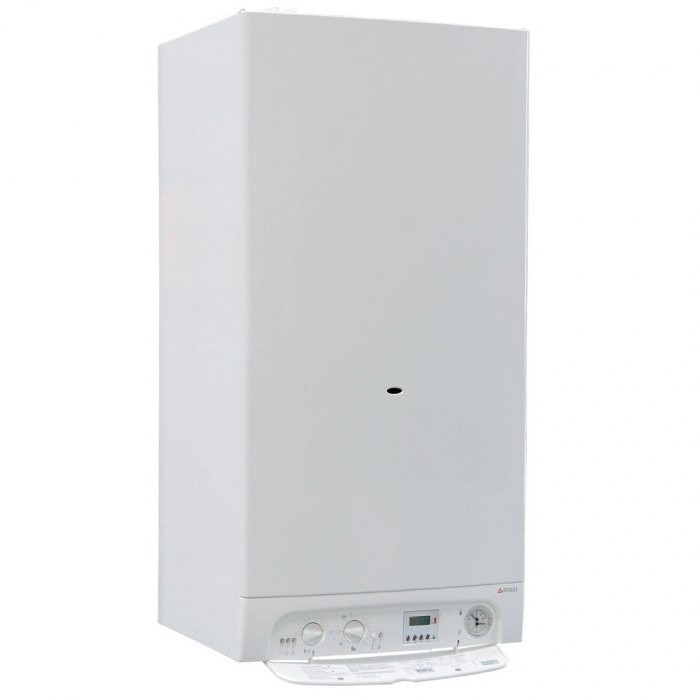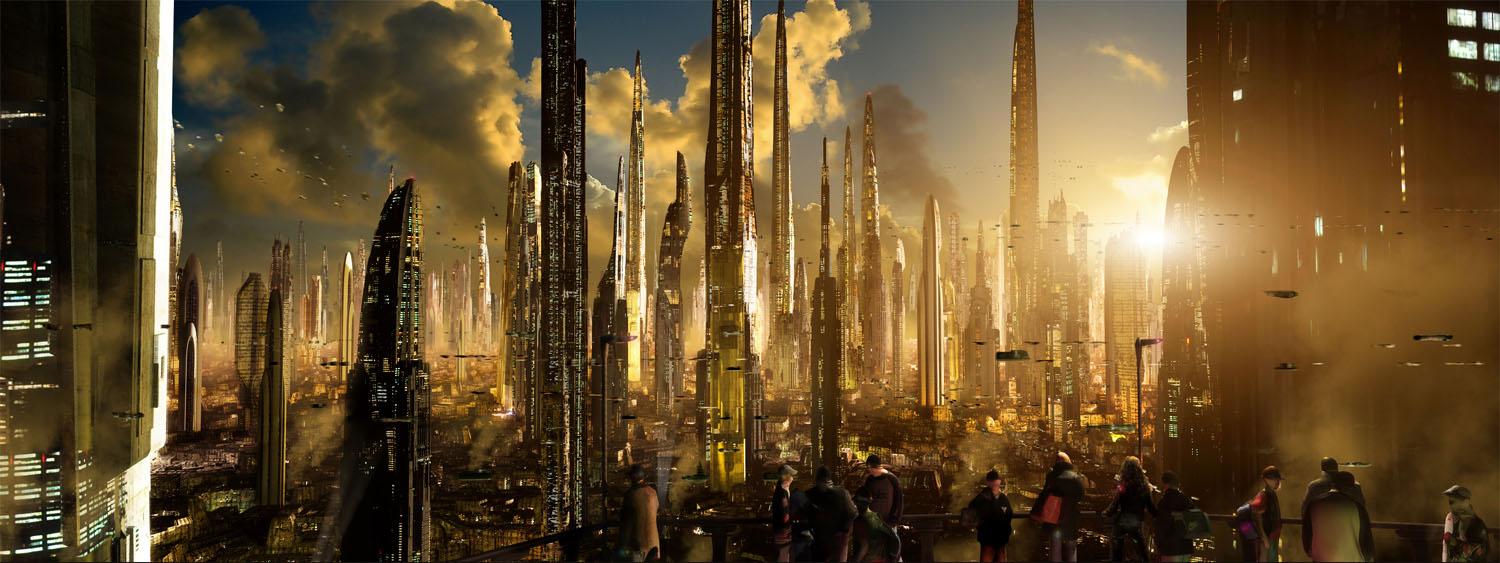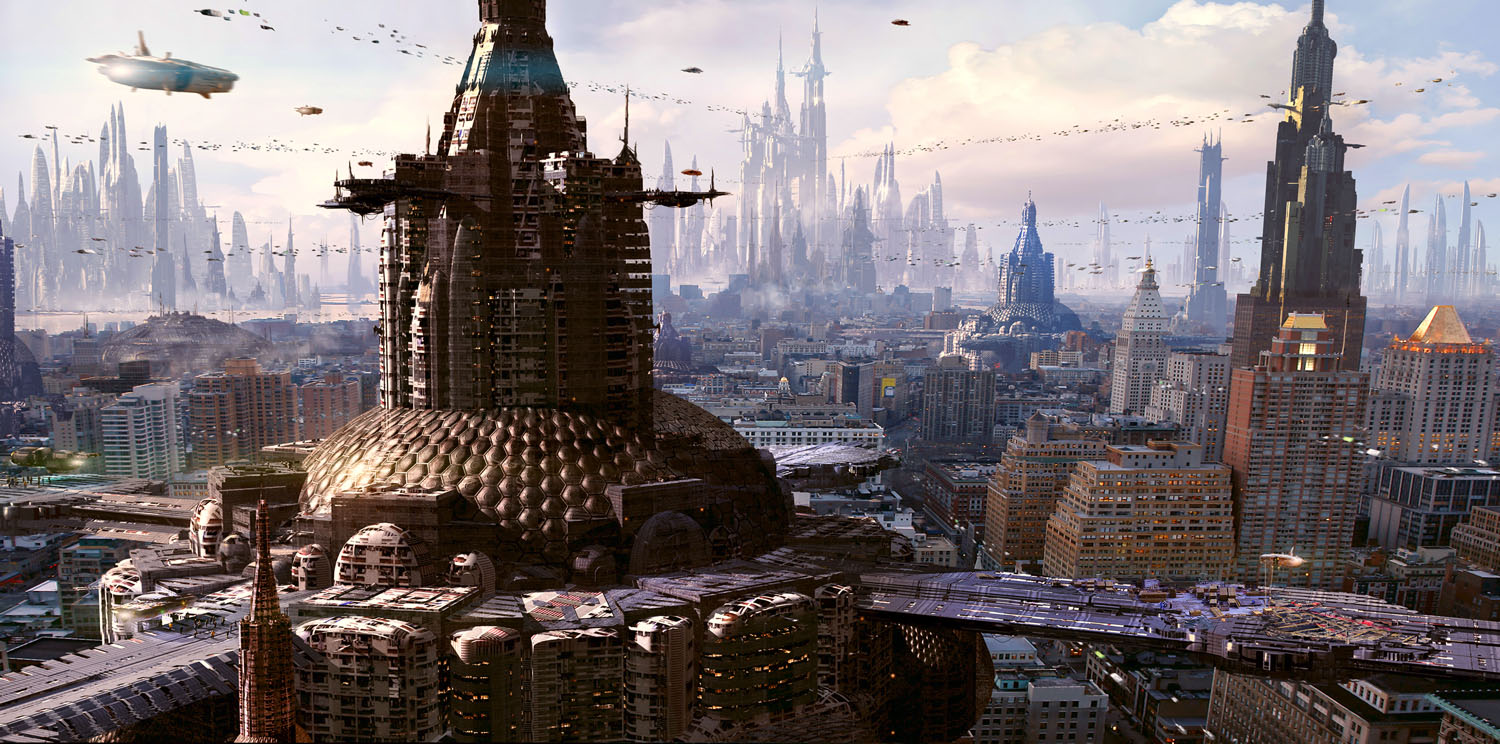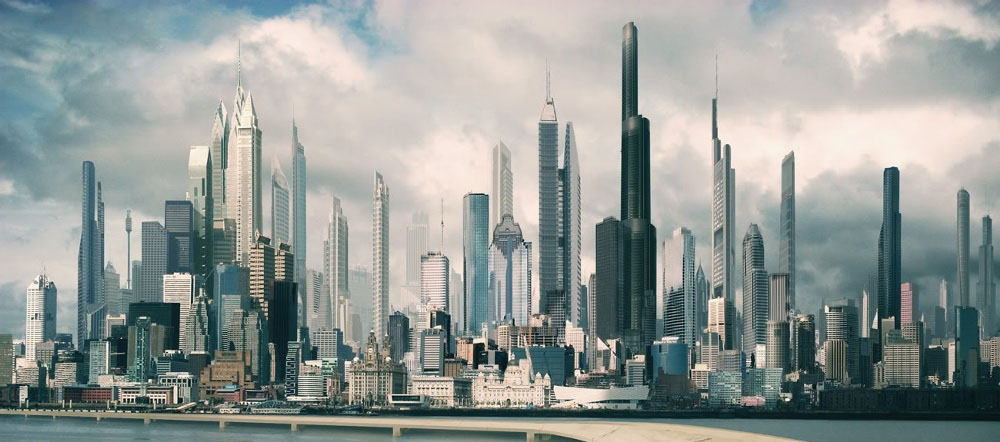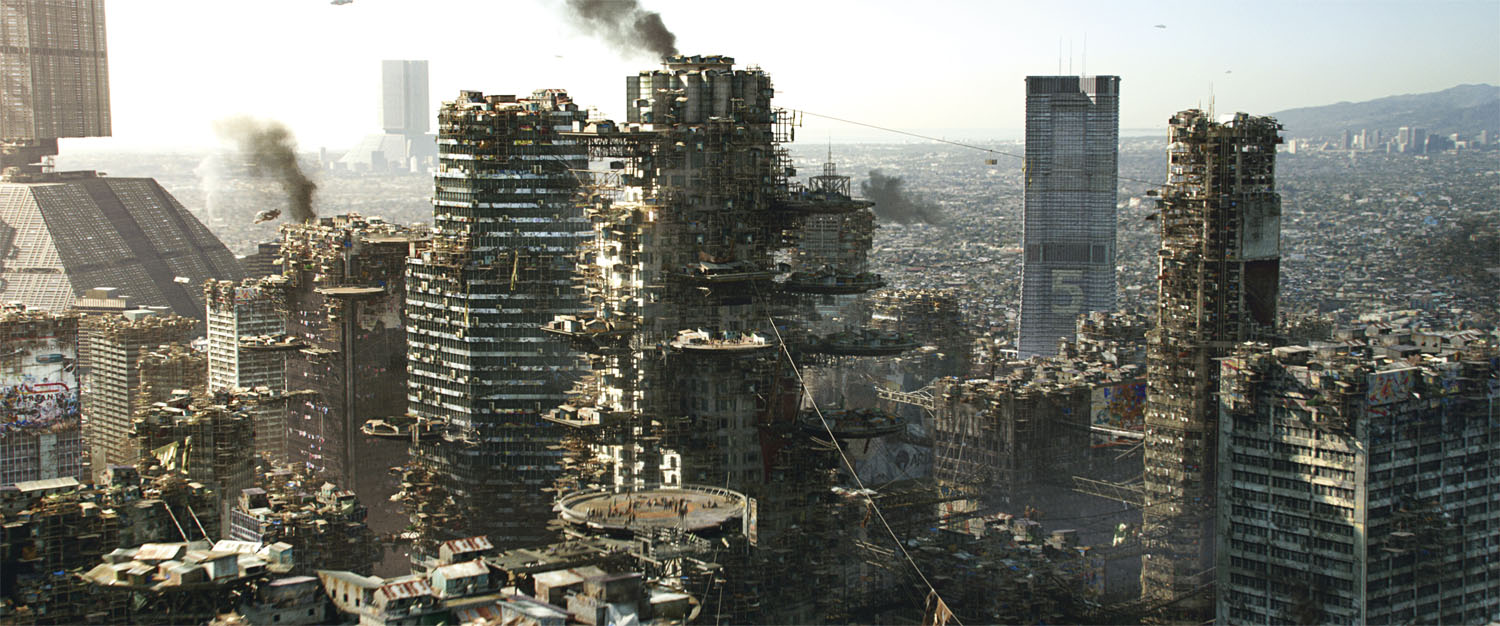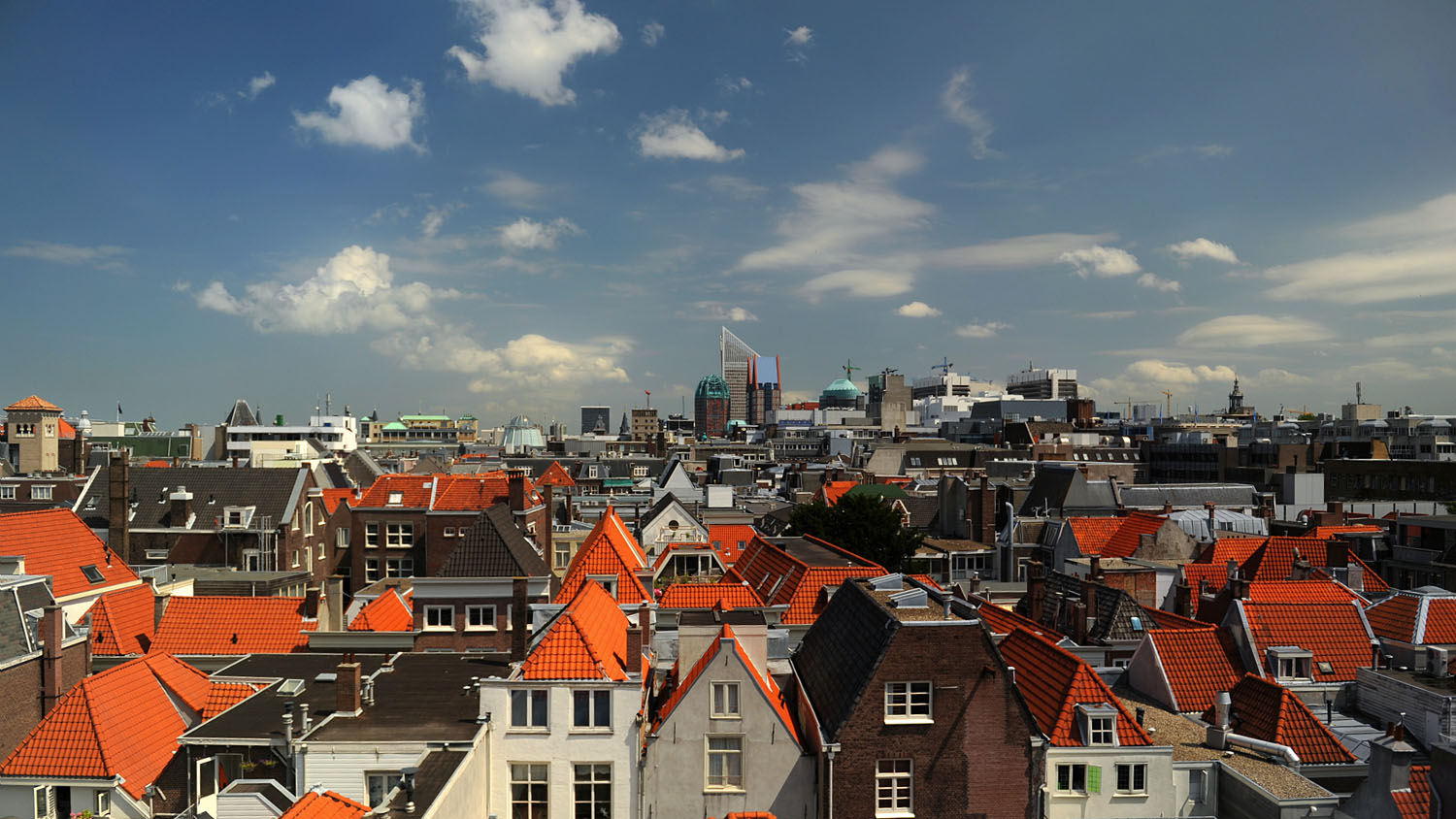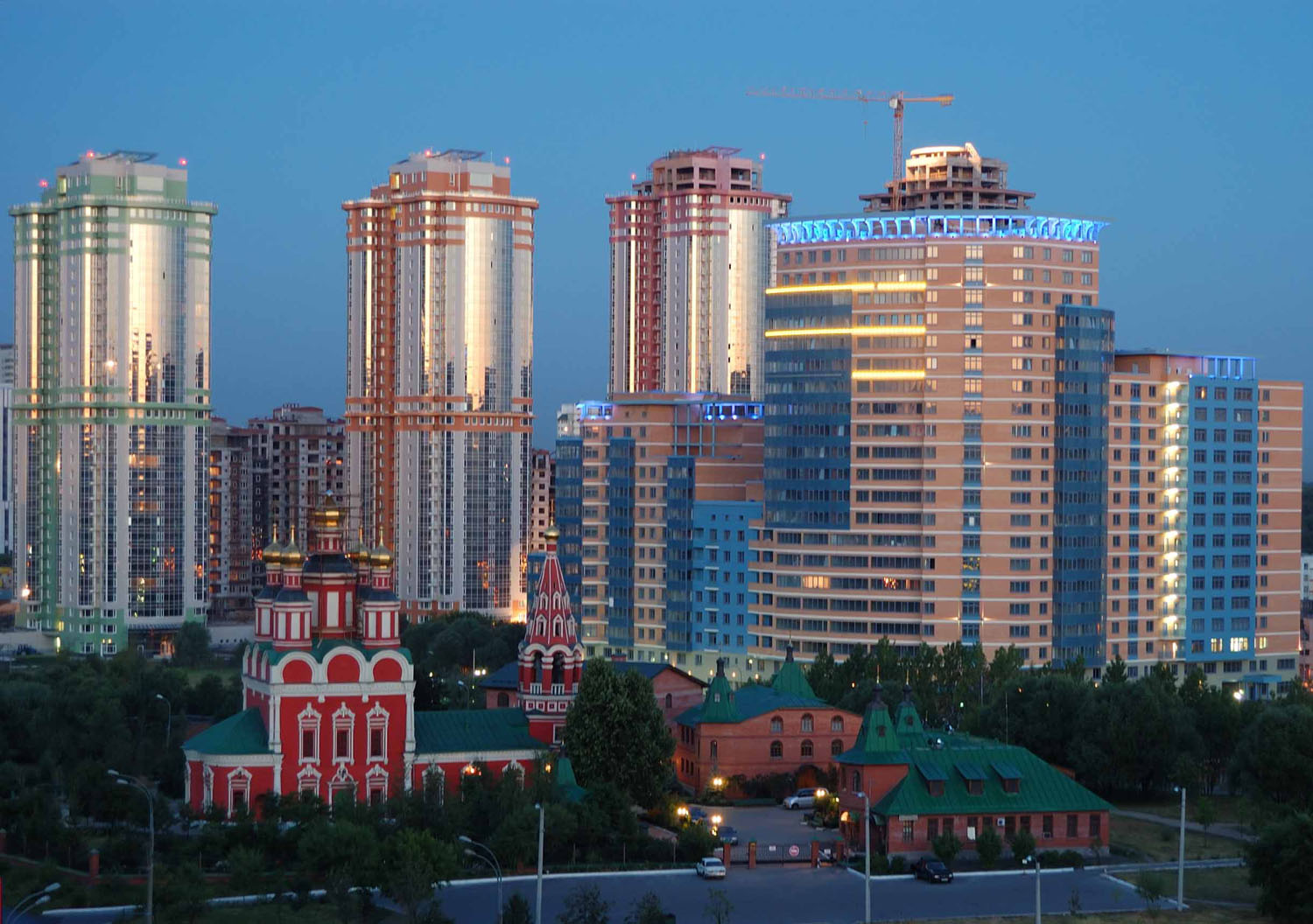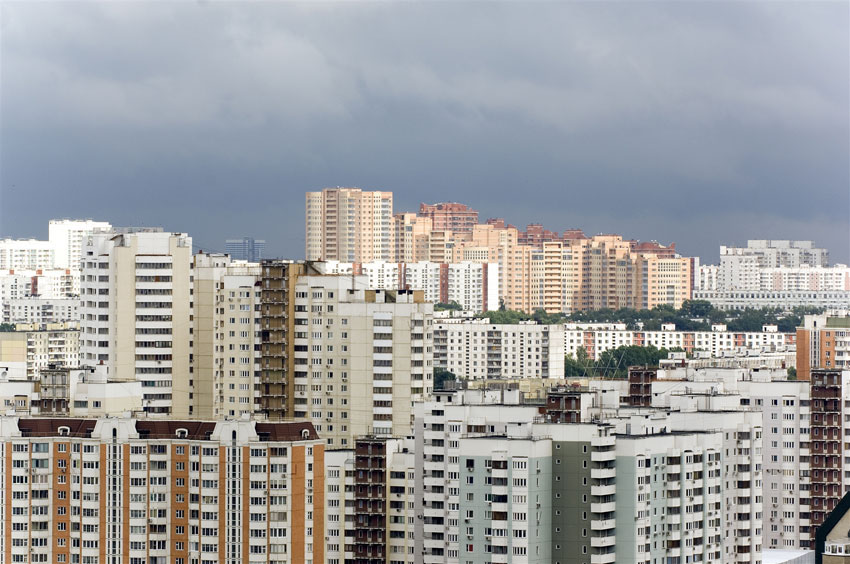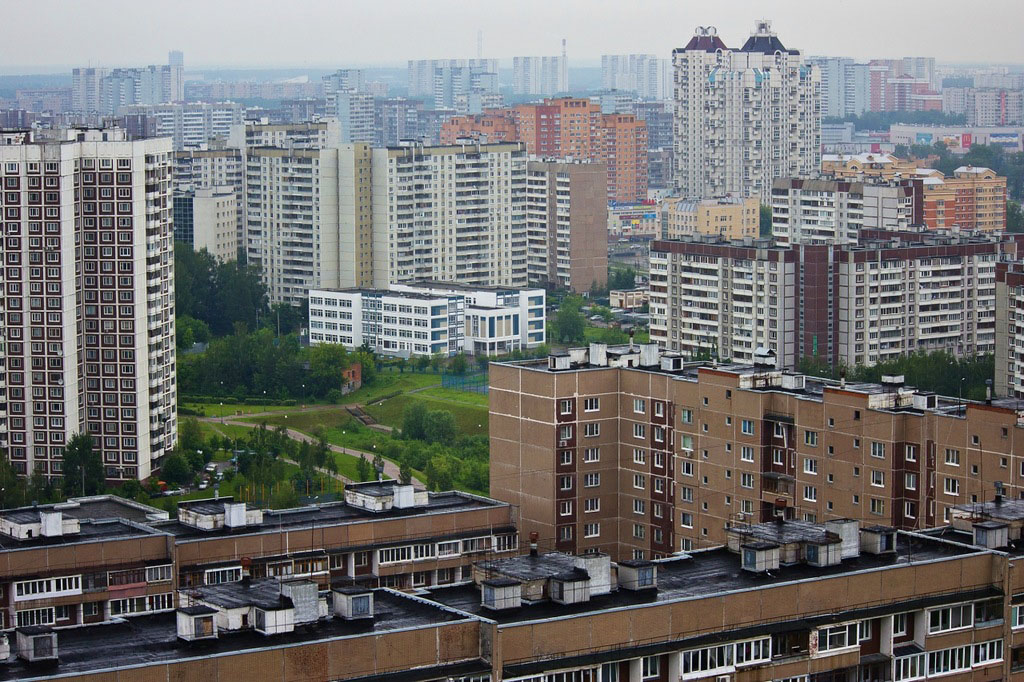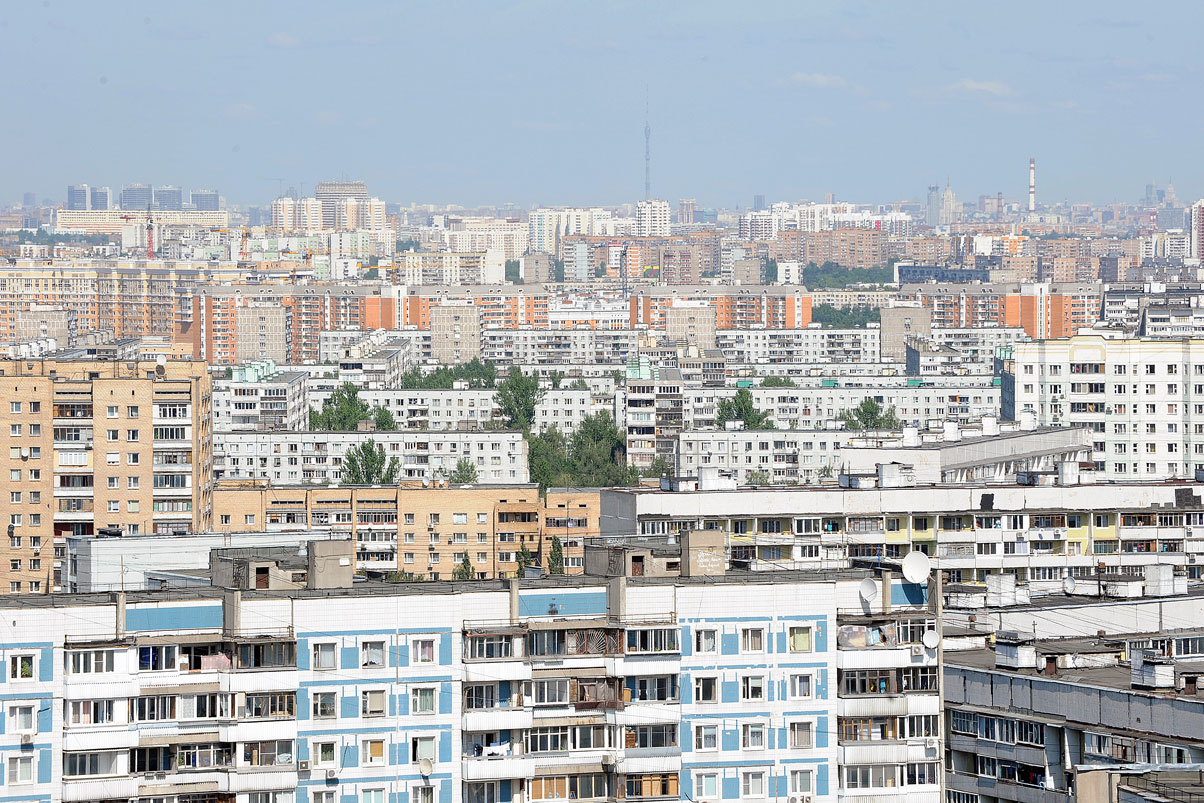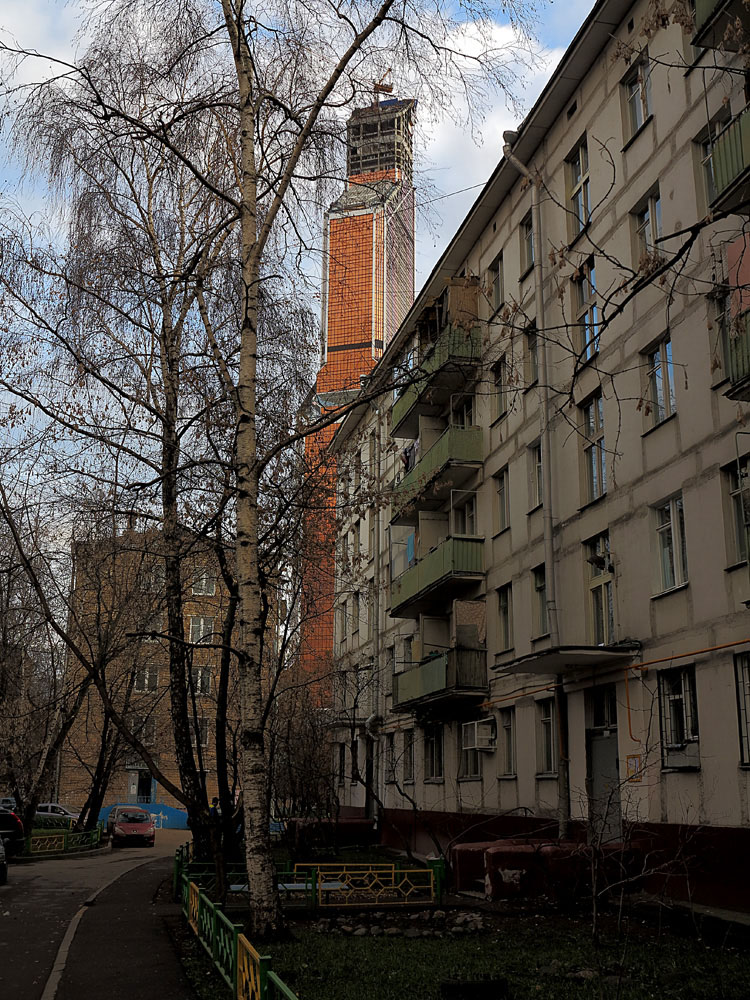I like my city a lot. I have been living in Moscow with my family since my childhood. My city is very big and beautiful. Very often me and my family we go to the theatre, restaurants, circus and park. Every year my city becomes more and more beautiful. But honestly I would like to change some things yet.
When I went to the kinder garden we didn’t have a lot of space to play. So according me these places have to have more space. I am talking now about space to study, to do sport and many other things.
Also at school I would like to study psychology, sociology and religious lessons. It’s interesting, helpful and important not only for students.
I would like libraries become more accessible. Few times I wanted to take encyclopedia at home, but I couldn’t. They don’t have many encyclopedias in library, so nobody can take it at home. Well it is supposed to be more books there.
In our city it’s not a lot of fresh air, because of many cars are here. If people start to use gas, our air is gonna be cleaner.
In general I see that our country is changing slowly: education, medicine, markets. But people have to pay more attention to education of young people. Sometime education is so expensive, so students go to work instead of attend the classes.
Another thing that is really important for me is traveling. I wish people were able to travel at least twice a year. It would help us to meet new people, start to speak foreign languages, discover the world. Personally I want to be beautiful inside and outside, so I want to develop myself as much as possible. To change the world you must change yourself.
На английском языке. Life In Future
I guess there is no person who has never thought about what life will be in future. Future is something that worries every person, we think about our own future, the future of our family, our world and planet.
We all have very different ideas about what our future will look like. There are hundreds of films which describe various theories about this. Some of them are of course fantastic, but many are quite realistic. Many people wait for robots to do the household chores, flying cars to appear, computers to take most of the work which people do today. As for me, I hope that in future people will solve many problems of today such as discrimination, homeless people and unemployment. It will be difficult to solve environmental problems because of the growing industry but I still hope that the technical progress will make it possible to stop global warming and pollution. Talking about the distant future, maybe we can even find one more planet to live, which would be incredible. But for now it sounds like a pure fiction.
It would be wonderful if people stopped making wars. I think this is my biggest wish for the future. As John Lennon sang in his famous song Imagine: “Imagine all the people living life in peace…” – I suppose it is a good aim for humanity, to have no conflicts, nothing to kill for.
I believe every person can contribute to our common future and make it better.
Перевод на русский язык. Жизнь в будущем
Я считаю, что нет такого человека, который никогда бы не думал о том, какой будет наша жизнь в будущем. Будущее – это то, что волнует каждого, мы думаем о своем будущем, будущем нашей семьи и всего мира и планеты.
У нас совершенно разные идеи о том, как будет выглядеть наше будущее. Существуют сотни фильмов, описывающих различные теории об этом. Некоторые, конечно, фантастические, но многие достаточно реалистичны. Большое количество людей ждут пока роботы начнут выполнять работу по дому, пока появятся летающие машины, пока компьютеры начнут выполнять большинство работы, которую сегодня выполняют люди. Лично я надеюсь, что в будущем люди решат многие проблемы сегодняшней жизни, такие как дискриминация, бездомные люди и безработица. Будет сложно решить экологические проблемы из-за развития индустрии, но я все же надеюсь, что технический прогресс даст возможность остановить глобальное потепление и загрязнение. Говоря о далеком будущем, может быть, мы даже найдем другую планету для жизни, что было бы невероятно здорово. Но сейчас это больше похоже на фантастику.
Было бы здорово, если бы люди перестали воевать. Думаю, это самое большое мое пожелание о будущем. Как пел Джон Леннон в своей знаменитой песне «Imagine»: «Представьте, что все люди живут в мире…» – думаю, это хорошая цель для человечества – чтобы не было конфликтов, нет было причин убивать.
Думаю, каждый человек может внести что-то хорошее в наше общее будущее и сделать его лучше.
How you want sometimes to close your eyes and imagine that now you are in a dream. And in real life, everything is exactly as it should be.
Heat and energy
«How do I see the future of my city?» This work can be done extremely extensive, because the locality should be deprived of all the shortcomings that interfere with normal life today.
Of course, in the city of the future in October autumn will come. Just like now, it will be rainy. The ambient temperature will gradually approach zero. But residents of the city of the future will not care about these problems — the newly built housing will be very warm.
On the roof of each house will be solar panels that generate additional energy. This innovation will reduce emissions of harmful substances of traditional thermal power stations several times.
Each apartment has its own heating source — a gas or electric boiler.
«City of the Future» (composition) is a dream about a settlement in which the problem of mud and unharvested snow is solved: a special cap will be installed, which will protect the townspeople from precipitation.
Household waste
Composition «As you imagine the city of the future,» I would very much like to send to the mayor’s office with the call for introducing sorting of garbage.
Soon the inhabitants will only remember with horror howdozens of years ago there was a complete disregard for natural resources. Instead of using their second, fifth, twenty-eighth time, garbage was buried with the help of a rink in landfills.
«City of the future» is an essay about the future, in which the need to save trees and land for descendants is very clearly shown.
Each resident will deliberately sort the garbageat least four types: metal, plastic, glass, paper. Up to ninety percent of the products sold in stores will be created from reproduced material.
Composition «How do you imagine the city of the future»is a good help for a massive change in the quality of life for the better. Of course, it is worth changing the mentality of the whole people. But it’s worth it — nature will say «thank you» for it.
I would very much like to hope that the mini-work «The City of the Future» will be exactly the impetus that will force the city’s leaders to solve really important issues for the population.
Transport
The rolling stock will be completely renewed. And also it will be timely repaired and changed as necessary. Retro models can be seen only in museums and in pictures.
A whole fleet of brand new trolleybuses and tramswill be exactly on schedule to deliver passengers to the desired point on the route. At each stop there will be a scoreboard with a timetable. But in the mobile device of each resident a special program will be installed, which allows not to waste time at a stop in anticipation of transport.
Almost the whole city will be covered by electric transport- buses with gluttonous engines will gradually leave the line. Even on intercity routes, the advantage will be for trains and electric locomotives — a huge number of wind stations throughout the country will provide an opportunity to cover the electricity deficit.
Throughout the territory of the settlement there will bededicated bike paths that will not intersect with public roads. This type of transport will become very popular among all age categories. It was never so safe to travel.
«City of the Future» is an idyllic composition. Its purpose is to take a fresh look at the pressing transport problems and to allow people to plan their time as efficiently as possible.
Environment
One of the main decisions thatthe government of the future — at times increase the number of green spaces. Trees will be everywhere — alleys of plants of special dwarf varieties with small trunks and crown will be able to allocate the maximum possible amount of oxygen and not interfere with pedestrians.
Recreation
The inhabitants of the «city of the future» will always have the opportunity to relax. To do this, all the parks are to be added. In any pond you can swim, they will be completely safe.
All the old buildings that violate the overall beauty will be repaired or demolished.
Conclusion
Sure, everyone wants to live comfortably. In this vision, «The City of the Future» is an essay on how to solve problems that make life so harder.
But with a sincere desire and community of all residents, a dream about the city of tomorrow can become a reality tomorrow. It is only necessary to begin the change with yourself, from today.
Представлено сочинение на английском языке Будущее моего города/ The Future of My City с переводом на русский язык.
| The Future of My City | Будущее моего города |
| My name is Alexey and I live in a beautiful city called Saint Petersburg. What would I like to see in the future of my home city? | Меня зовут Алексей, и я живу в красивом городе Санкт-Петербург. Что бы я хотел видеть в будущем в моём родном городе? |
| First of all, I wish bikeways were all around the city finally. Every year they are new roads somewhere but there is still not enough in my neighborhood. It’s very hard to bike around the city without special roads because when you are using the road cars are honking at you and if you are using sidewalk then pedestrian are not happy. | Во-первых, хотелось бы, что сеть велодорожек наконец-то опутала весь город. Каждый год их где-нибудь делают, но в моём районе их пока катастрофически мало. А без них ездить по городу очень неудобно – когда едешь по автомобильной дороге, сигналят водители, по тротуару, возмущаются пешеходы. |
| Secondly, I imagine the future of my city with sports fields in every subdivision. Sport is very important for everyone but especially for teenagers. If you want to work out you need to have a place for it. It would be great if there is a separate place for sports games like basketball, football and volleyball. | Во-вторых, будущее своего города я представляю со спортивными площадками в каждом дворе. Спорт очень важен для любого человека, а для подростка тем более. Занятия воркаутом требует площадки, так же хотелось бы, чтобы была площадка для спортивных игр, таких как: баскетбол, футбол, волейбол. |
| Thirdly, I wish they finally solved parking problem. All the roads and areas are filled with different cars and yet people don’t have enough place for it anyways. My father sometimes has to drive around the block for 10 minutes before he finds a place to park his car. I wish they would hide all the parking under ground and all the sidewalks, community areas, playgrounds would be available and pretty. | В-третьих, хотелось бы, чтобы была решена с парковкой автомобилей. Все дворы и тротуары забиты различными транспортными средствами, и всё равно водителям негде припарковаться. Мой папа иногда по десять минут кружит вокруг дома, чтобы найти место для парковки. Было бы здорово, если бы автомобили были спрятаны в подземные парковки, тем самым они освободили бы дворы для зон отдыха, игровых площадок, да и просто зелени. |
| Fourth, I wish they would build new metro stations. A lot of areas of the city don’t have it and it’s very inconvenient. For example, my grandmother lives in such area and it takes 20 minutes to ride a bus to get to metro and then go to our house and of course it’s very tiring and so long. | В-четвёртых, я хотел бы, чтобы были построены новые станции метро. Целые районы города остаются без метрополитена, что очень неудобно. Например, моя бабушка живёт в таком районе и ей приходится по двадцать минут добираться на автобусе до ближайшей станции метро, чтобы потом поехать к нам в гости, что, конечно, очень неудобно и очень долго. |
Recently, a lot of technologies that are about to enter our lives in just five or ten years have emerged. All this will have quite a large impact on our cities, houses, apartments, attitude to things and, overall, on our values. By the way, some of the elements of the future are relatively familiar to us, but let’s start the analysis of the future of the city and its components in the right order: in this case from the idea of how we expect the city of the future to be like.
Search engines give us three images of the city of the future, the first of which is some kind of skyscrapers conglomeration of bizarre shapes. And not just skyscrapers, but towers of some incredible size and height, which are aimed towards space, just like rockets. To be honest, this type does not hold any water and it is very hard to believe that our cities will look like this, but let’s return to this later. Examples of the “skyscraper city”:
The second type, which Internet suggests — a garden city. A city, which is surrounded by greenery, the height of buildings is not as large as in the skyscraper city and the cities themselves look quite cute and cozy. In principle, the second type of the city of the future looks the most realistic, but still misses some points.
An interesting project “Paris 2050” by Vincent Callebaut as an example of a garden city
The last city type is a dystopia city which is not even a city but a conglomeration of slums, poverty and devastation. A relatively trivial vision of the future not backed up by anything, but somehow this view is popular.
A dystopia city
What can be said about these three types of cities? They are all based on the idea that the population of people will group (which is true) and, as a result, all the cities of the future should have skyscrapers and must grow upwards, with what I strongly disagree due to a very important reason: the current population density.
Take the figures from Wikipedia: the population density of the Netherlands is higher than that of India — 407 people on a square kilometer against 397 people per km2. That is, in the Netherlands, the population of which is equal to seventeen million, should be as crowded as in the 1.3 billion India. Belgium, by the way, is not much different with their 368 people per km2 and with a total population of just over eleven million. Is it crowded in these countries? Do they look, even remotely, like these expectations of the future cities? Photos of the largest cities in the Netherlands and Belgium:
Amsterdam, the capital and the largest city of the Netherlands, population 825 thousand
Rotterdam, 625 thousand
The Hague, 515 thousand
Antwerp, the largest city in Belgium, 510 thousand
Gent, 251 thousand
Charleroi, 202 thousand
As can be seen from the panoramas of the largest cities of some of the most densely populated countries in Europe (again: the Netherlands has a higher density than India!) — it had no effect on the height of the cities.
Yes, Rotterdam is relatively high, but this has developed historically: after the bombing during the Second World War the city was rebuilt and it turned into a kind of an architectural experiment. The tallest building in Benelux is located in Rotterdam — the “Maas Tower”. It can be seen on the panorama — a gray-black building to the right of the Erasmus bridge, office of Deloitte and AKD. So, the tallest Benelux building has a height of 165 meters, which cannot be compared to the height of the skyscraper cities.
One more analogy can be drawn. In this case let’s compare with Moscow, the capital of Russia. There are about 12.3 million people in Moscow — a city with the population of the whole Belgium. It is reasonable to build such territory up on the skyscraper city type, what, actually, was and is done:
New buildings in Moscow
Moscow landscape:
However, before claiming that Moscow’s strategy is correct and there is no alternative, it is necessary to take into account a few more numbers. Russia is the largest country on Earth with 17.1 million square kilometers. Its population is equal to 144 million people. Let’s compare with the European Union: area equals 4.3 million km2 (almost four times less), population — 508 million people! Three and a half times more people live in the EU on the territory which is almost four times less than Russia! Wherein European cities in most cases look like cozy towns with comfortable buildings proportions for human beings.
The thing is that Russian cities are an example of a mediocre urban policy which not only was not radically changed after the fall of the Soviet Union but was only exacerbated by continuing to build the same buildings but in larger size, height and on larger scale. And, as a result, a terrible centralization was created, which practically cannot be found in Europe.
Largest cities in Europe in terms of population: Istanbul (14 million), Moscow (12.2 m), London (8.4 m), St. Petersburg (5.2 m) and Berlin (3.6 m). London, a global city and one of the financial centers of the world, is an exception, rather than a regular European city, but even such city is smaller than Moscow and Istanbul! The next European city is Berlin whose size cannot even be compared with Moscow.
What follows from all this and how it is connected with the cities of the future? For a start, it should be recognized that enormous and gigantic cities are not a necessity but the contrary — the cause of an inefficient urban development. People relocate to the administrative centers not due to the desire to live specifically in the capital, but because of the lack of self-realization opportunities in other regions and in their hometowns. The greater is decentralization, the smaller the cities are, there are more of them and, of course, they are lower in height. Even taking into account the high population density across one country, they are more comfortable than half-empty countries like Russia with overcrowded major cities.
Another reason for skyscraper cities is poor transport or the lack of it. A person will not live in the suburbs or in a neighbor town if he has no possibility to quickly get to his office, university or school using public transport or if the quality of such transport is low. In that case that person will settle in the city, what takes place in Moscow and, as I might suggest, happens in Turkey. Otherwise why would 18 % of the country live in the largest city (the population of Turkey is 77.7 m, Istanbul, as has been said, 14 million).
The third important reason for the emergence of skyscraper cities is the avarice of the politicians. It is easier to build a large city, erect spectacular towers and show this city to all foreigners, take photos of the city center or a city district and tell the whole country the achievements of the government while showing the photos of the capital. This desire to “stand out” is strongly evident when you look at the list of the tallest buildings in Europe. In addition to Russia in the top ten there is London on the fourth place and Frankfurt on the ninth. The rest of the places, as one might guess, are all in Moscow.
From this simple list one can find a couple of interesting observations. The most obvious: Moscow and Istanbul are leading in the number of high-rise buildings in Europe. Such European cities as London, Paris and Frankfurt, which are tourist or business centers, have much less high-rises. Azerbaijan looks funny with five buildings only in Baku with heights between 140 and 209 meters. Azerbaijan, which has a 9.6 m population, an area of 86.6 thousand km2 and which cannot be compared to the economic development of Belgium, which has 30.5 thousand km2 size and which has three high-rises in Brussels from 142 to 150 m. The Netherlands are half of Azerbaijan size and have almost twice as many people and still the high-rise buildings in the country are between 140 and 165 m. What is more, high-rise buildings are located in four cities of the country, rather than in the capital alone, as in Azerbaijan.
Another interesting observation is the Palace of Culture and Science in Warsaw, construction of which ended in 1955 by the Soviet Union. To this day, it is the tallest building in Poland: the height of the Palace is 237 meters; the height of the Warsaw Trade Tower build in ’99 is 208 m, and the recent Złota 44, built in 2012 — just 192 meters. What follows from this? There is no need and economic rationality in the construction of such tall buildings, which are just toys for people who imagined themselves as “emperors” and “masters of the world”.
The Palace of Culture and Science is an excellent example of the imperial heritage. And the current urban policies of Moscow and Istanbul are also excellent examples of vain ambitions and ostentatious success, aimed only at the officials with their reports to their superiors, which will replicate these beautiful pictures around the world, proving that they are “part of Europe” too.
By the way, of the economic irrationality of such projects like “Moscow City” says the large amount of unoccupied spaces: according to various estimates between 30–40 % of the whole project is not rented and in some buildings the number increases to 70 %. And that is not taking into account the fact that the complex is not finished! The completion is scheduled for 2019. In view of international sanctions the full name of this project sounds especially funny: “Moscow International Business Center”. Real Moscow and “Moscow City”:
This is the first part about the cities of the future; let’s draw some conclusions: the size of the country and its population does not affect the height of cities and their sizes. The Netherlands and Belgium could be the examples as the most densely populated countries in the world. What really affects cities is the unreasonable centralization, economical depression of the majority of the regions of one country, lack of high-quality public transport and vain ambitions of politicians.
Moscow fell victim to all these factors. It is likely that the same situation is in Istanbul and other cities outside Europe as the facts and figures give this particular picture.
How will the cities of the future really be like? With the right urban planning decisions they will be greener, will remain as cozy as Europe is now and will develop harmoniously until a certain moment. Then, perhaps, they will start getting smaller: distant jobs and latest types of transport will allow us to relocate from cities to wherever we wish. Perhaps, the future is not in the city but in private homes. We will analyze this in subsequent parts. The main thing to remember — the skyscraper city is not a necessity but an obvious incompetence of the city planners, politicians and their hollow ambitions.
I believe in a better future. I very much hope that we, the people, will improve the world in which we live. Therefore, the city of the future will be very different from the modern to the best. In the city of the future a lot of attention will be paid to places of recreation. many parks will be built, cinemas, viewing platforms. Where there is no sea, no rivers, artificial reservoirs will be made, in which you can swim and boat. Each city will resemble a resort.
Я верю в лучшее будущее. Я очень надеюсь, что мы, люди, будем совершенствовать мир, в котором живем. Поэтому и город будущего будет очень отличаться от современного в лучшую сторону. В городе будущего много внимания будет уделяться местам отдыха. Будет построено множество парков, кинотеатров, смотровых площадок. Там, где нет ни моря, ни реки, будут сделаны искусственные водоемы, в которых можно будет купаться и плавать на лодках. Каждый город будет напоминать курортный.
Author’s note: This essay originally appeared in The Baffler web-zine July 2016
The following was my original submission draft. It may contain some typos.
The Future of the City
by James Howard Kunstler
One spring day not so long ago, I had a low-grade epiphany walking across New York’s Central Park from my hotel on the West Side to the Metropolitan Museum of Art off Fifth Avenue. First I noticed that the park was in absolutely immaculate condition, in better shape than ever in my lifetime, going back to my 1950s school days. The Sheep’s Meadow was now a lush greensward — compared to the brown hard-pan wasteland it had been back in the day. The Bethesda Terrace beside the lake and the adjoining Great Mall with its once-decrepitating Naumberg bandshell were all fixed up. Vanished original buildings such as the Dairy, designed by Olmsted and Vaux in the 1850s and then lost to decay, had been meticulously reproduced. The epiphany part was when I realized that this miracle was altogether a product of the financialization of the US economy. A Niagara of money had flowed into the tax-deductable mission of the Central Park Conservancy.
It was a short leap from there to realize that over the past quarter-century every formerly skeezy neighborhood in Manhattan had undergone remarkable renovation: the Bowery, Alphabet City, Times Square, the Meatpacking District, even Harlem, not to mention the practically whole new nations of Brooklyn and now Queens. Well, all those hedge funders needed someplace to live, as did those who work in other well-paid but less-exalted professions: show business, fashion, media, and computer tech. Same story: the financialization of the economy, and the resultant widening disparities of income between Wall Street and the rest of the nation, had concentrated immense wealth in Gotham.
When I was a young man in the 1970s, New York was on its ass. Bankrupt. President Gerald Ford told panhandling Mayor Abe Beame to “drop dead.” Nothing was being cared for. The subway cars were so graffiti-splattered you could hardly find the doors or see out the windows. Times Square was like the place where Pinocchio grew donkey ears. Muggers lurked in the shadows of Bonwit Teller on 57th and Fifth. These were the climax years of the post-war (WW II) diaspora to the suburbs. The middle class had been moving out of the city for three decades leaving behind the lame, the halt, the feckless, the clueless, and the obdurate “risk oblivious” cohort of artsy bohemians for whom the blandishments of suburbia were a no-go state-of-mind. New York seemed done for. And meanwhile, of course, other American big cities were likewise whirling around the drain. Detroit, Cleveland, Chicago, Cincinnati, St. Louis, Milwaukee, Baltimore, and Washington DC…. Horrors. Even San Francisco was a dump in the cold, dark, pre-dawn years of the dot-com age (when I lived there in 1974-5).
On the other hand, sunbelt metroplexes such as Atlanta, Houston, Dallas, Charlotte, and Phoenix were booming back then, but not in a way that made any sense in traditional urban terms. They merely expressed the most exaggerated characteristics of suburban sprawl in new and horrifying ways: downtowns decorated with “signature” office towers that went utterly lifeless after 5 p.m. — because nobody lived there — surrounded by vast asteroid belts of suburban chain store dreck and tract housing monotony, dominated by tangles of freeways. These weird new crypto-urban agglomerations had been hardly more than tank towns before 1945, so even their worst car-dependent features and furnishings were pretty new, that is, not yet subjected to the ravages of time. Which is to say they were typologically different from the older US cities like New York.
In any case, getting back to my stroll across Central Park that spring morning, there was a second part to my low-grade epiphany — which was that I was here witnessing the absolute peak of a cycle in the life of New York; that from this point forward things would start falling apart again, and probably worse than the previous time in the 1970s. I shall elaborate on the shocking particulars of that presently, but first I must describe exactly what the financialization of the economy was about and why it is coming to a bad end.
Contrary to the American religion of endless progress, the techno-industrial age is a story with a beginning, a middle, and an end, and we are closer to the end of that chapter in human history than to the middle of it. By the 1970s, the USA began to feel the bite of competition from other parts of the world that had rebuilt their industrial capacity following the debacle of World War II. Our factories, which had not been bombed during the war, were old and worn out. Environmental consciousness produced stringent new regulation of dirty industries. Third World nations with rising populations offered ultra-cheap labor and lax regulation. So, we “off-shored” US industry, which for a century had been the major source of our economic wealth.
Industrial production was replaced mainly by two activities. First, after being constrained by the oil crises of 1973 and 1979, the suburban sprawl build-out resumed with vengeance in the 1980s. Secondly, and connected with sprawl via the mortgage racket, was the expansion of the financial sector of the economy from five percent to over 40 percent. The suburban sprawl part was easy to understand. It was the preferred template for property development, an emergent process over the decades. The local zoning and building codes had evolved to mandate that outcome by law. The separation of uses became more extreme: housing tracts here, office parks there, shopping somewhere else, connected solely by cars. You couldn’t build a popsicle stand anywhere in the USA without supplying fifteen parking spaces. The new laws for handicapped access had the unintended consequence of heavily discouraging buildings over one story. The tragic part was that suburban sprawl was a living arrangement with no future. The oil crises of the 70s had portended that, but both the zoning codes and the cultural conditioning over-rode that warning. Anyway, Americans simply couldn’t conceive of living any other way.
Back when finance was a mere five percent of the economy, banking was boring and didn’t even pay so well. It was based on the 3-6-3 formula: borrow money at 3 percent, lend it out at 6 percent, and be on the golf course at 3 o’clock. In the 1960s, bank presidents and stock brokers might have a color TV instead of a black-and-white, and they might drive a Cadillac instead of a Chevrolet, but they didn’t live on another planet of ultra-wealth. The role of banking in the economy was straightforward: to manage society’s accumulated wealth (capital), and re-deploy it for productive purposes that would produce yet more wealth.
The computer revolution of the 1990s helped take finance to a whole other level of hyper-complexity with astonishing speed and, because the diminishing returns of technology always bite, this venture produced some ferocious blowback — namely, that many of the new “innovative” financial instruments created by computer magic enabled swindling and fraud on a scale never seen before. This was especially true in the securitization of mortgage debt into fantastically complex mutant bonds, many of which were notoriously designed to blow up and reward their issuers with bond “insurance” payouts. That bit of mischief led to the crash of 2008. The systemic damage of that event was never resolved but simply papered over by taxpayer bailouts and massive Federal Reserve “interventions” that continue to the present.
This chain of events entailed an unprecedented growth of debt at all levels of society (household, corporate, government) such that the obligations eventually outstripped any plausible prospect of repayment. Something very sinister and largely unacknowledged lay behind it. This was the fact that real economic growth in the old developed nations had sputtered (and was soon to sputter in the “emerging” economies, too). And behind that was the fact that the world had run out of affordable petroleum. There was still a lot of oil left in the ground, but it cost too much to get out — whatever its “market” price ended up being once it was gotten out. Without ever-increasing supplies of oil that was cheap to produce, you couldn’t get economic growth, and without that growth, you couldn’t pay back the interest on the ever-increasing debt that was needed to get the oil out of the ground (and to run industrial societies generally).
Quite a quandary, totally unacknowledged in the public discourse. If anything, the authorities — business leaders, the media, politicians — had gotten the story all wrong with their blather about “energy independence” and “Saudi America.”
The “peak oil” story had worked out rather differently than even close observers had imagined ten years ago. It could be boiled down to a simple equation: oil above $75 a barrel crushed industrial economies; oil below $75 a barrel destroyed oil companies. The Ponzi scheme known as the “shale oil miracle” only extended the damage in the bond markets and postponed the energy reckoning by a few years. The shale oil companies weren’t making money when the stuff sold for $100 a barrel in 2014, but the high price succeeded in crushing the economy. Then, when demand cratered and the price of oil fell to under $40 a barrel, the shale oil companies started to go bankrupt, because it still cost them $75 to pull it out of the ground, and they had to keep pumping it out to maintain cash flow to service their junk bond financing.
I elaborate on these arcane matters because it is fundamental to understand that the root cause for the sputtering of economic growth is that the primary resource needed for creating it (oil) has exceeded our ability to pay for it — and despite all the wishful thinking, there is no alt-energy rescue remedy to replace it. Hence, we’ve been borrowing from the future (piling up debt) to keep the vast complex systems of advanced civilization running. And now we’ve run out of our ability to pile on anymore debt. The result will be a collapse of our complex systems and a re-set of human activity to a lower and simpler level. How disorderly the process gets remains to be seen, and where it stops is as yet unknown. But it will have everything to do with how human life organizes itself on-the-ground, and therefore with the future of our cities.
One can state categorically that the colossal metroplex cities of today are going to have to contract, probably substantially. They have attained a scale that no plausible disposition of economy looking ahead can sustain. This is contrary, by the way, to most of the reigning utopian (or even dystopian) fantasies which, any way you cut them, only presume An ever-greater scale of everything. The great renovation of New York City circa 1990-2015 was enabled by Wall Street’s management role in the supernatural debt growth of the period combined with the creaming off of fees, commissions, and bonuses by bankers in the context of absent regulation abetted by pervasive accounting fraud in both private business and government. This is what brought us all the renovated neighborhoods, the scores of new residential skyscrapers, the multiplication of museums and cultural venues, and the buffing up of Central Park. It will be followed by a steep and harrowing descent into disinvestment.
Apart from that unnerving prospect, it must be said that the recent rediscovery of city life in America, per se, was a positive thing, given the decades-long experiment with automobile suburbia. It’s hardly surprising that generations raised in that vapid, soul-killing milieu desperately sought something better, denser, and more active. Notice, though, that the revival of cosmopolitan life mainly took place in those cities connected by some degree to the financialized economy: New York, Boston, Washington, Chicago, and San Francisco. Cities such as Detroit, Cleveland, Buffalo, St Louis, Kansas City, and many more “flyovers” continued to sink even as the new starchitect condo towers rose up over lower Manhattan. It was also unfortunate that few small cities and towns benefited from the re-urbanization movement.
Most cities are located where they are because they occupy important geographical sites. New York has its excellent deep water harbor and the Hudson River estuary. These outstanding amenities were enhanced later with canal connections to the Great Lakes and the St. Lawrence. San Francisco and Boston, ditto great harbors. Detroit stands on a strategic river between two Great lakes. And so on. There are sure to be some kind of human settlements in these places as long as people are around, though they may be very different in scale and character from what we have known them to be. Detroit will probably never again be the colossus it was in 1950 but something will occupy that stretch of river.
On the other hand, the techno-industrial economy allowed cities to develop rapidly in places in that lacked outstanding natural features. Denver and Atlanta grew up around railroad depots, provisional human constructs that may or may not have value going forward, given America’s extreme neglect of its once-excellent rail system. Places like Phoenix, Tucson, Las Vegas, and much of Southern California may become uninhabitable without cheap air-conditioning-for-all, a viable automobile-based transport system, and the ability to produce food locally. Cities in the “wet sunbelt” such as Miami, and Houston, may succumb to rising sea levels. Orlando may decline out of sheer irrelevance when its theme park economy withers.
The current scale of our “metroplex” cities is inconsistent with the resource and capital realities of the future. Just about everything in our world is going to have to get smaller, finer, and also more local. The failure of suburbia is pretty plain to see, and its trajectory is not hard to understand. But do not assume that there will necessarily be a great demographic rush into the big cities as suburbia fails. The big cities will have enormous trouble with their aging infrastructure — the 100-year-old water and sewer systems, the stupendous hierarchies of paved roads, the bridges, and tunnels, etc. The American electric grid is decrepit and the estimate for fixing it alone runs greater than a trillion dollars. The cities will also have problems with the debt-based promises of support for public employees and dependent underclass populations. These places will have to contract around their old centers and their waterfronts, if they have them. The process will entail the loss of vast amounts of notional wealth represented in buildings and real estate. It may provoke ethnic battles between groups fighting over who gets to occupy the districts that retain value.
New York City and Chicago face an additional problem: an extreme overburden of skyscrapers. Our society does not know it yet, but the skyscraper is already an obsolete building form, and for a reason generally unrecognized: they will not renovated. They have no capacity for adaptive re-use. The capital will not be there to renovate things at the giant scale at which they were originally built. There’s also a good chance that many manufactured modular building materials will not be available, either, for instance, gypsum board (“sheetrock”). It might seem to be a humble material, but it actually requires very long and sophisticated mining and manufacturing chains, and it may be assuming too much that these supply chains will continue to operate in the years ahead. The same can be said of steel beams and trusses, aluminum sashes, metallic and enamel claddings, plate glass, concrete block, cement, plastic or metal pipe, silicon gaskets, plywood, etc. In short, these enormous buildings, now considered assets will quickly turn into liabilities.
This outcome is unrecognized largely because under current conditions the professionals involved — developers and architects — cannot resist the temptation to maximize the floor-to-area ratio of any given urban building lot. Why stop at six stories when the zoning law allows sixty? Why make only $10 million on any given parcel of land when you can make $100 million in sales and commissions. They simply can’t imagine behaving differently for now. But in the future, a new consensus may eventually form that the scale and height of new buildings must be a lot more modest. (By the way, central Paris is still mostly composed of buildings under seven stories, without detracting from its cosmopolitan verve). In the future, we may decide that the maximum building height is keyed to the number of stories you can ask people to walk up comfortably.
A related issue, however, is also not generally recognized: the potential failure of the condominium model of property ownership. Also known as deconstructing the rights of real estate, this experimental system, in which ownership is portioned out among individual apartment dwellers, and managed under a corporate property-owners association, has only been tried on a mass basis since the 1970s. That is to say, we’ve only experienced it on our way up a colossal mountain of debt accumulation; we have no idea what happens during the period of debt default we have entered. It takes only partial failure of a condominium building — apartment owners defaulting on their mortgages and failing to pay association dues — for the property association to fail, meaning that afterward there will be little maintenance and repair of the building. Do not assume that our current financial arrangements have resilience. Like other elements of this story, they seemed like a good idea at the time. And then times change.
I would introduce the perhaps jarring idea that the locus of settlement in the USA is headed for an even more striking change, namely that the action is going to shift to the small cities and the small towns, especially places that exist in a meaningful relationship to food production. These places are currently the most derelict and disinvested in the nation. I would argue that they are about to regain importance. For one thing, the global economy is unwinding. It never was a permanent installation in the human condition, contrary to what Tom Friedman said in his books and newspaper columns. That global economy was the product of special circumstances, namely a hundred years of super-cheap energy, and about seventy years of relative peace between the major powers of the world. Those conditions are now ending, and the transient globalized economic relations that flourished under them — the chain of products moving from the factories of Asia to the Wal Marts of America — are coming to a close.
The economy of North America will be much more internally-focused in the years ahead. We will have to rely much more on what we can produce closer to home, and that production is sure to be at lower level than what we are used to. Among other things, it will lead to the resurrection of America’s inland waterway system, including the towns and cities along it. Places like Cincinnati, Louisville, and Memphis will regain importance, though probably not gigantic scale. Do not assume that the trucking industry will continue to function, or that we will make the necessary reinvestment in our existing rail lines. Do not assume that any models of our current commercial system will continue as we know them, including national chain shopping, the supermarket method of food distribution, or contemporary banking.
Suspend all your assumptions about our ability to continue the familiar arrangements of the present day. We are passing through a difficult transition and I don’t think it will lead to the techno-nirvana that many are expecting. In fact, I think we are likely to lose many of the technological advances that we have come to take for granted, starting with the ubiquity of the Internet — which depends, after all, on a completely reliable electric grid. We are heading into a contraction of techno-industrial activity and probably an eventual contraction of population. We have to make things smaller, more local, and finer.
If you could go back in time to the year 1950, to Cadillac Square in the center of downtown Detroit, and interview a proverbial “man-on-the-street” there about the future, he might have had a hard time grokking what actually happened to the place after 1970 — the astounding devastation that occurred without a war taking place. Likewise, I think the American public fails to see the probable arc of the current story. We are expecting nothing except more technological magic, and that is sure to leave a lot of people disappointed.
метки: Future, Будущее, Английский, Перевод, Village, Город, Человек, Жизнь
Жизнь в будущем (Future Life) топик по английскому
Топик по английскому языку Жизнь в будущем (Future Life)
Future Life
Can you imagine living in the year 2500? Maybe people will spend their holidays on the moon, or play with their pets in the virtual reality.
People all over the world wonder about life in the future. According to the recent surveys, people have their fears and hopes. For example, it is believed that human relationships will change a lot.
People will make friends and find their future spouses through the Internet. It happens a lot now, but in the future, it will happen more often. Other people say, that we won`t need so much real human contact, so we will become more isolated from each other.
There will be lots of changes in education too. Because of the computer programmes, children won`t need certain abilities like mental arithmetic or writing by hand.
Our home life in the future will be better. Robots will be doing all our housework and the food will be ready-made, so we will have lots of free time. A lot of people believe, that we might cook just for fun. Others think that we will be eating food pills.
Most of the people say that space exploration will become increasingly popular, we will visit Mars frequently. Travelling on the Earth will also probably change: there will only be environmentally-friendly traffic. But there are people who are worried about air pollution in the future very much.
On the other hand, most of the people seem to be quite optimistic, because they see the progress of the medicine, and especially the genetic engineering. The scientists will find a cure for cancer and AIDS, so the society will be much healthier.
There are people who worry about the future, and there are ones who are full of enthusiasm and hope. But no it doesn`t matter that the future seems to be very far, we have to do our best to make the world a better place to live.
9 стр., 4022 слов
Сообщение здоровый образ жизни на английском языке
… Сочинение на английском языке на тему здоровый образ жизни с переводом Текст на английском языке «Здоровый образ жизни – Healthy life-style» Nowadays healthy life-style is gaining more and more popularity. Lately people … Возможно будут интересны и другие темы: Перевод текста «Здоровый образ жизни – Healthy life-style» Здоровый образ жизни в наши времена набирает все больше и больше популярности. …
Жизнь в будущем
Люди по всему миру размышляют о жизни в будущем. Согласно последним исследованиям, у людей есть свои страхи и надежды. Например, считается, что отношения людей сильно изменятся.
Люди будут находить друзей и будущих супругов через интернет. Сейчас это тоже часто происходит, но в будущем будет происходить еще чаще. Другие говорят, что нам не нужно будет так много контактировать с людьми в реальности, поэтому мы будем более изолированы друг от друга.
В сфере образования тоже будет много изменений. Из-за компьютерных программ детям не понядобятся такие способности как счет в уме или письмо от руки.
Наша будущая жизнь дома изменится в лучшую сторону. Роботы будут делать за нас работу по дому, а еда будет уже готовой, поэтому у нас будет много свободного времени. Многие люди считают, что мы будем готовить просто ради удовольствия. Другие считают, что мы будем питаться пищевыми таблетками.
Большинство людей считает, что исследование космоса станет более популярным, мы часто будем часто летать на Марс. Путешествия на Земле тоже скорее всего изменится: у нас будет только экологичный транспорт. Но есть и другие люди, которые сильно беспокоятся о загрязнении воздуха в будущем.
С другой стороны, большинство людей настроены довольно оптимистично, так как видят прогресс медицины и особенно генной инженерии. Ученые найдут средство от рака и СПИДа, таким образом общество станет намного более здоровым.
Есть люди, которые волнуются о будущем, а есть и те, кто полон энтузиазма и надежд. Не имеет значения, что будущее кажется очень далеким, нам следует стараться изо всех сил, чтобы сделать мир лучшим местом для жизни.
Топик по теме «Мой город в будущем» на англ.языке
Мой город, это звучит гордо и навевает самые светлые ассоциации. Город, в котором ты родился и вырос, город в котором проходят школьные годы. Тут каждая улочка знакома, а привычная дорога уже становится путем для мечтаний и размышлений. Иногда, мы даже не замечаем красоты пробегающих мимо деревьев, не обращаем внимание на смену сезонов, окрашивание листьев багряным цветом или увядание природы.
Наверное, каждый сможет назвать несколько основных достопримечательностей своего родного города: памятники и скверы, музеи и театры, раскинулись по центральным улицам что бы порадовать приезжих. Но, только местный житель, имеет свои памятных мест, находясь в которых мысли начинают свой полет, а душа раскрывается. Это тайны города, познать которые приезжему не дано. Ходя по этим улицам, сложно даже представить что они, как и все, вскоре изменятся, заиграют новыми фасадами и красками. Скорее мы представляем город прошлого, что находилось в этих местах несколько лет, а может и столетий назад. Как строился молодой город и как изменялся древний можно понять по фотографиям, архитектуре, рассказам бабушек. Но как все же сложно представить, что всего этого может завтра не быть.
11 стр., 5388 слов
Михаил Ломоносов: «Народ, не знающий своего прошлого, не имеет …
… трудом можно чего-то добиться. Ведь именно усилиям человек добыл огонь, а обезьяна стала ходить на двух ногах. Сочинение на тему: «Без прошлого нет будущего» Прошлое, будущее и настоящее связаны между собой. От многих событий … праздничные дни у тысяч мемориалов и обелисков, в музеях боевой славы в городах и поселках нашей страны проходят митинги, встречи с ветеранами войны и труда. …
Что станет с моим городом через 5 или 10 лет? Что появится, а что останется только в памяти сказать очень сложно. Уж точно, на центральных улицах не будет этих старых фасадов и витрин. Фасады отреставрируют, а витрины сменятся на другие, станут по-своему модные, блестящие, но совершенно другие. Кардинальные изменения заметит тот, кто прожив в городе много лет, уедет, бросит его, и вернувшись через много лет, поймет, что он уже не тот, и человек и город.
Мой любимый город – Якутск
Город Якутск – столица Республики Саха /Якутия/. Он был основан в 1632 году. Отряд казаков под предводительством сотника Петра Бекетова закрепился на правом берегу реки Лена. Здесь была поставлена деревянная крепость, несколько изб и часовня, которую обнесли частоколом. Именно эти строения дали начало городу.
Сегодня Якутск – крупный индустриальный, культурный и научный центр. Деловыми отношениями город связан со многими предприятиями России. Численность населения превышает 226 тысяч человек.
Якутск – город науки, здесь находится свыше 30 научно-исследовательских институтов. Среди них Институт мерзлотоведения – уникальное научное учреждение. Его название говорит само за себя. Перед входом в институт расположен единственный в мире памятник-символ – мамонт, погребённый в вечной мерзлоте. Якутский государственный университет готовит высококвалифицированные кадры для всей республики, специалистов самых разных профессий.
С каждым годом город хорошеет, растёт вширь и ввысь. Всё меньше остаётся деревянных построек. Современные здания из стекла и бетона украшают улицы столицы Якутии.
Мой город в будущем
Мы живем в прекрасном городе. Я очень люблю его и, конечно же, хочу, чтобы он становился все лучше и лучше. Каждый день наша жизнь меняется, меняется и облик городов, в особенности таких важных и больших, как наш.
Мне нравится, что он растет и облагораживается, становится таким красивым и современным: улицы — просторнее и чище, тротуары выложены разноцветной плиткой, а вдоль них тянутся аккуратные зеленые газоны. По вечерам весь город освещается многочисленными фонарями, и думаю, что в дальнейшем в его украшение будет вкладываться еще больше фантазии. Я словно вижу Якутск, состоящий из прозрачных зданий. На всех площадях и в сквериках, перед каждым солидным зданием будут бить чудесные фонтаны, один лучше другого. Струи их будут разноцветными, а вокруг в течение всего дня будет звучать музыка, наполняя город соответствующим настроением. Днем это будут веселые, жизнерадостные мелодии, а вечером — спокойные, романтические.
Кроме того, я представляю себе наш город утопающим в цветах и деревьях. Ведь природа — это залог чистоты воздуха, радости и вообще всей жизни. Выходные обязательно будут днями отдыха для всех. И люди смогут выбираться на природу: гулять по дорожкам скверов и парков, слушать пение птиц, дышать свежим воздухом. И все это в пределах города. Когда вокруг тебя множество прекрасных цветов, и люди, которые по пути в школу или на работу будут любоваться их великолепием, обязательно будут испытывать чувство радости и вдохновения. Они будут учиться и работать с большим желанием и удовольствием. А это, в свою очередь, будет способствовать процветанию нашего города. Ведь радостные люди дарят радость всему вокруг.
3 стр., 1479 слов
Конкурсное «Мой любимый учитель» ученицы 5 класса Асредней школы …
… Мне приятно учится у такого педагога». ^ «Мой любимый учитель в моей школе №81- Прахт Татьяна Юрьевна. Она обучает меня немецкому языку. Этот предмет я люблю, так как в будущем … они лучше воспринимают информацию. Моими любимыми учителями являются учитель математики Татьяна Анатольевна и учитель русского языка Елена Ивановна. На уроки этих учителей я хожу с удовольствием. А любимыми школьными …
Я представляю себе, как изменятся в будущем школы. Уже сейчас в нашу жизнь стремительно входят компьютеры и современные технологии. И я считаю, что школы тоже должны перейти на обучение с помощью компьютеров. Это облегчит и сделает более увлекательной учебу и упростит учителям оценку знаний. А может быть, знания вообще будут оценивать машины. А учителя будут преподавать в более свободной и интересной форме: с помощью музыки, занимательных рассказов и доверительных бесед с учениками. И не придется пачкать горы бумаги, переписывая с черновика на чистовик свои работы. У каждого ученика на столе будет стоять компьютер, на котором легко и быстро можно написать контрольную работу или сочинение, тут же исправить свои ошибки и отправить на компьютер учителю.
А чтобы свободное время школьники проводили с таким же Удовольствием и пользой, будут созданы центры отдыха, где каждый найдет занятие по своему вкусу. Кто-то захочет заняться спортом, посетить бассейн или поиграть в бильярд или боулинг. Другие предпочтут посмотреть любимые фильмы на большом экране или в зале со стереоэффектом. Третьи с удовольствием потанцуют или послушают музыку. А может, кто-то просто придет пообщаться с такими же ребятами и завести новых друзей. Ведь, чем больше у тебя друзей, тем интереснее и насыщеннее твоя жизнь.
Рассказ Город моей мечты, сочинение на английском языке, эссе
Мы много написали по теме город, рассматривали отдельные мегаполисы, теперь же поговорим про то, каким можно представить себе это явление в будущем.
The city of my dreams is a metropolis
Many artificial ponds.
It will be a sufficient city, there will be greenhouses in which food products are grown, in the suburbs – farms – for meat.
High degree of waste processing. The city uses its resources as rationally as possible.
The widespread introduction of biometric analysis for participation in elections, for making purchases. There is no need for cash and even credit cards. Zero crime rate.
The use of solar and wind energy, but the bulk – for a nuclear power plant, which will not save on electricity.
The main transport is public, private – electric vehicles.
Advanced medicine, in particular biotechnology. High level of prophylaxis
Diseases.
Total control over officials from the side of society. Expulsion from the city for corruption (among other punishments).
Maximum attention to children. Free schools, city-paid higher education.
The system of unconditional income. The desire of urban employees to create maximum opportunities for self-realization of citizens. Among other things, there are different schools of painting and music. Annual large exhibitions of local artists, including beginners, an art gallery, with the best works (the city buys from authors from its budget).
Musical and literary contests.
Город моей мечты – это мегаполис
Много искусственных водоёмов.
5 стр., 2465 слов
Рассказ «Мой любимый город — Одесса»
… прошлых веков. Обдумывая сочинение на тему моего города, нельзя не вспомнить о фонтанах. «Г» часто называют «городом фонтанов», всю прелесть которых можно почувствовать в вечернее время, когда под музыку и световое … к этому городу росла во мне постепенно, вместе со мной. Я влюбился сначала в родную улочку, потом в целый бульвар, по которому хожу в школу. И, уверен, …
Это будет смодостаточный город, здесь будут теплицы, в которых выращиваются продуты питания, в пригороде – фермы – для мяса.
Высокая степень переработки отходов. Город использует свои ресурсы максимально рационально.
Повсеместное внедрение биометрического анализа для участия в выборах, для совершения покупок. Нет нужды в наличных деньгах и даже в кредитных картах. Нулевой уровень преступности.
Использование солнечной и ветровой энергии, но основная часть – за атомной электростанцией, которая позволит не экономить на электричестве.
Основной транспорт – общественный, частный – электромобили.
Развитая медицина, в частности биотехнологии. Высокий уровень профилактики
заболеваний.
Тотальный контроль над чиновниками со стороны общества. Изгнание из города за коррупцию (помимо прочих наказаний).
Максимум внимания детям. Бесплатные школы, оплачиваемое городом высшее образование.
Система безусловного дохода. Стремление городских служащих создать максимальные возможности для самореализации горожан. Помимо прочего разновозростные школы живописи, музыки. Ежегодные большие выставки местных художников, включая начинающих, картинная галерея, с лучшими работами (город выкупает у авторов из своего бюджета).

